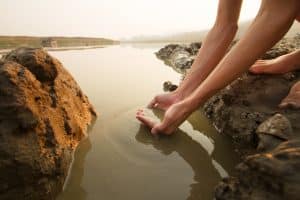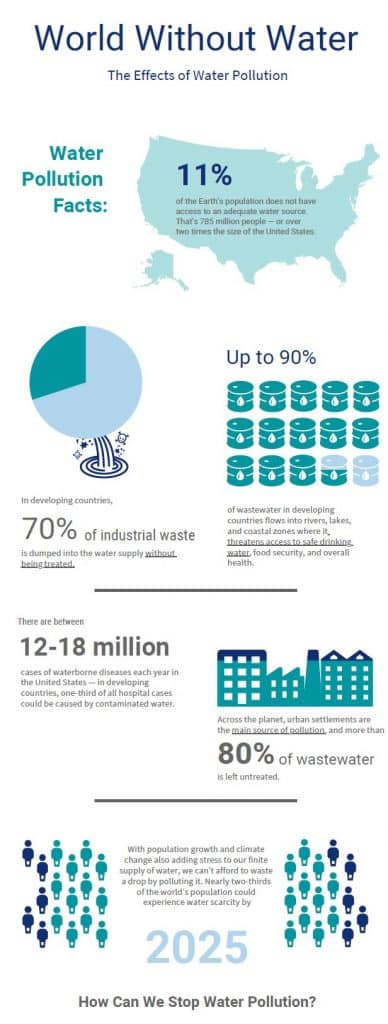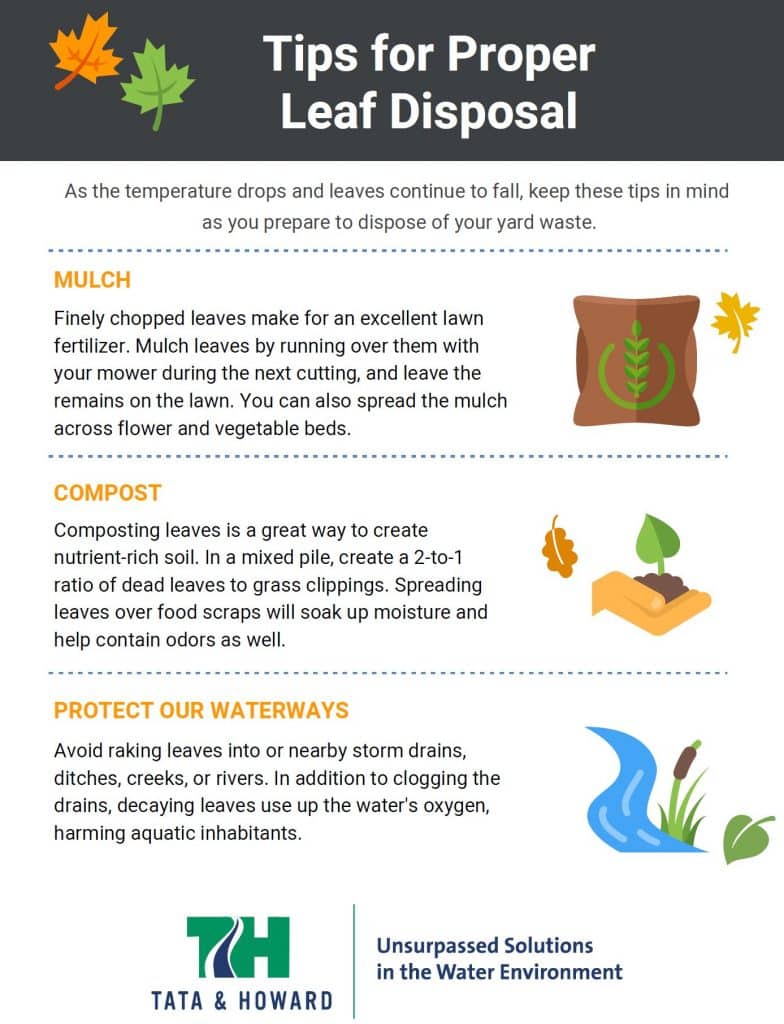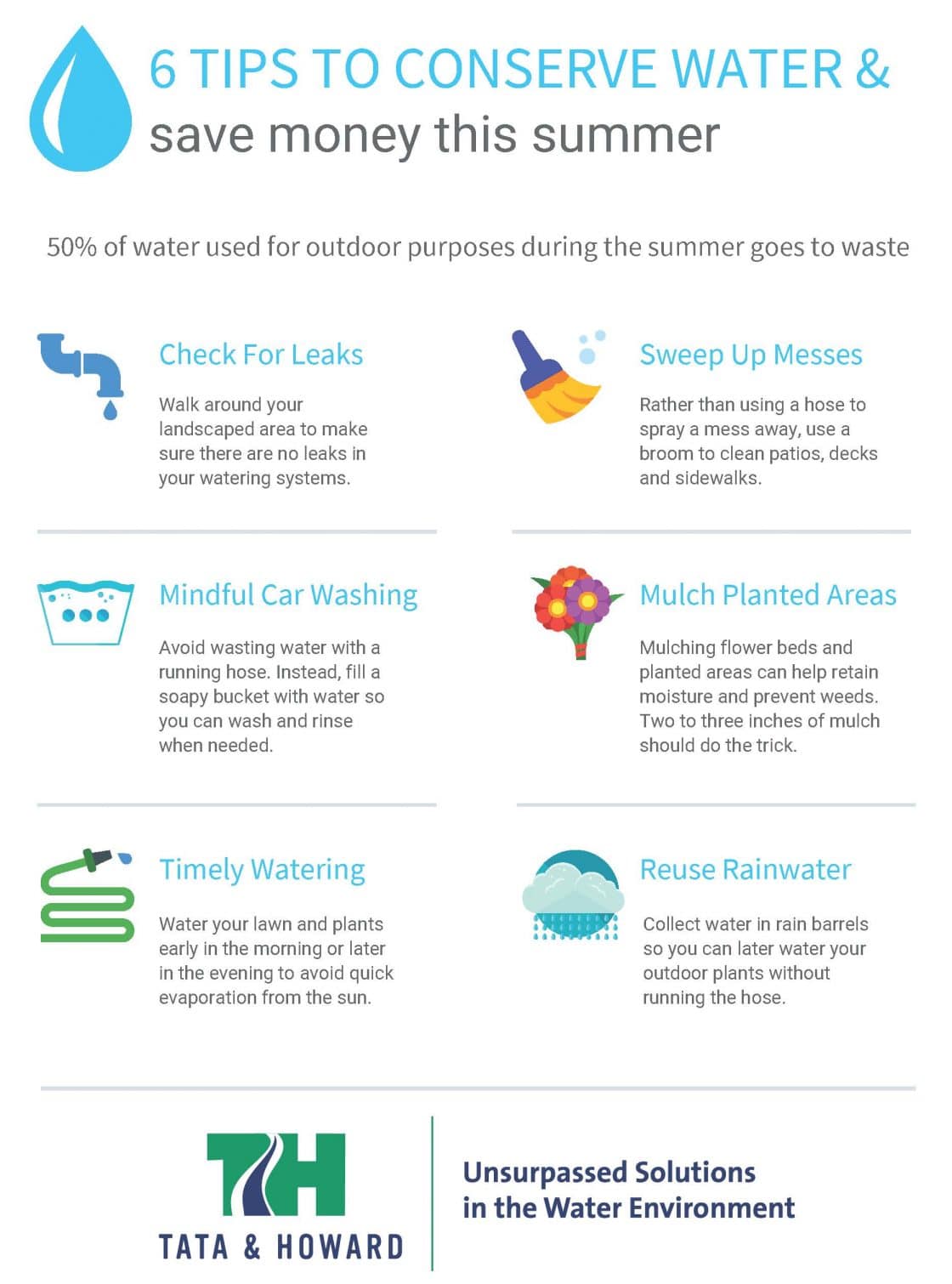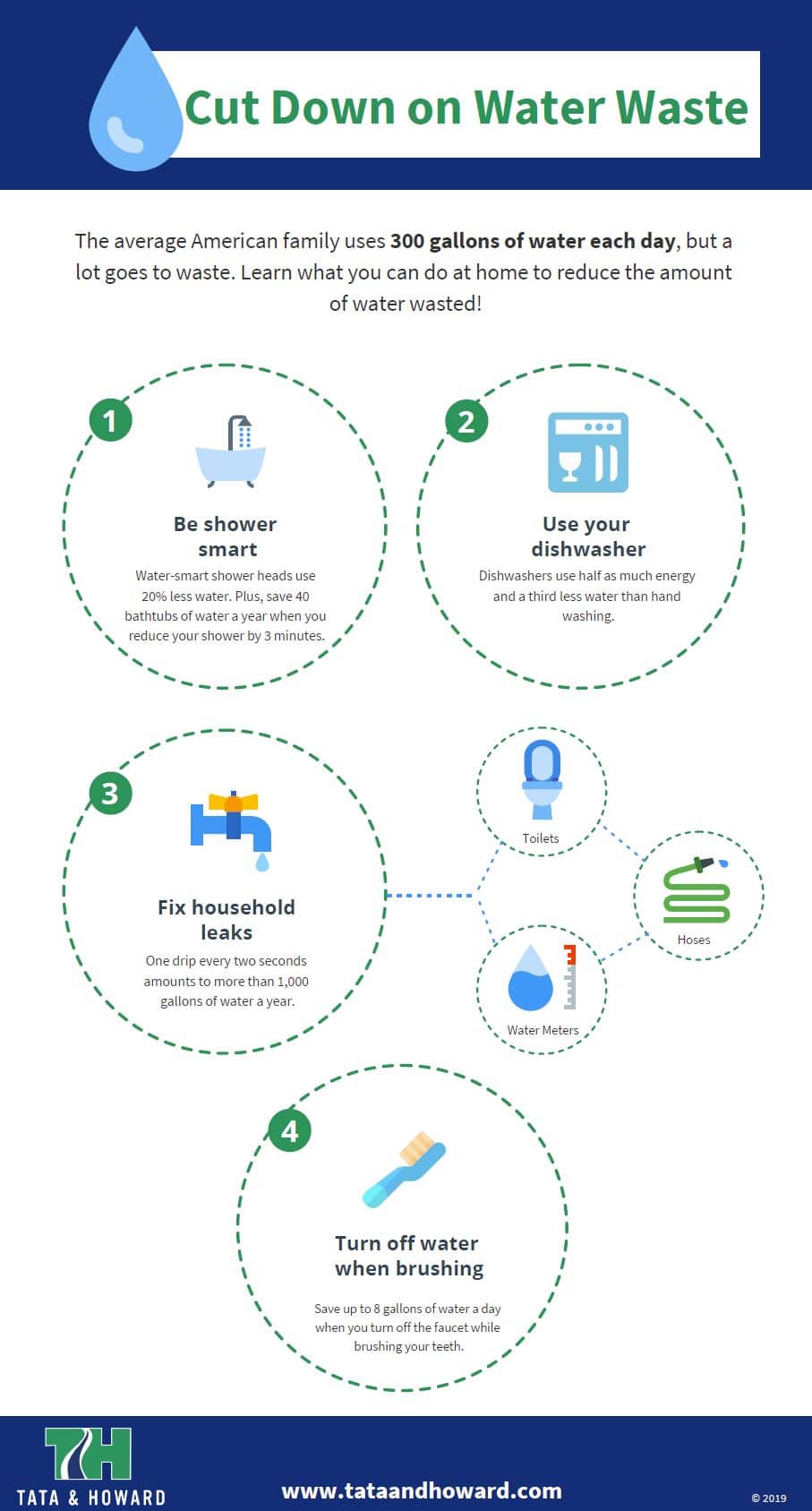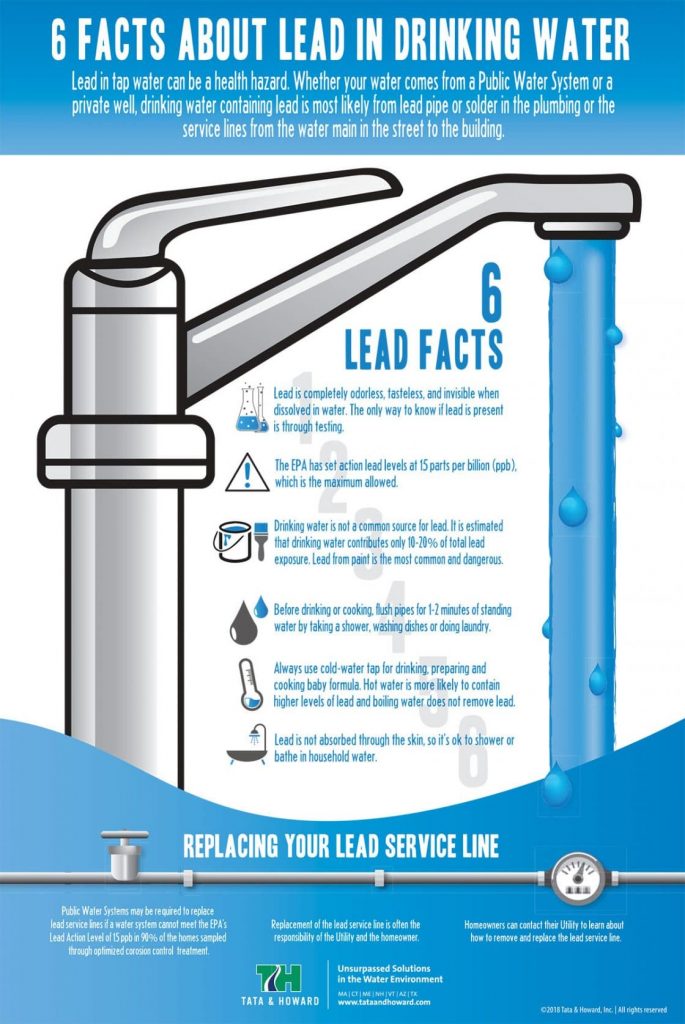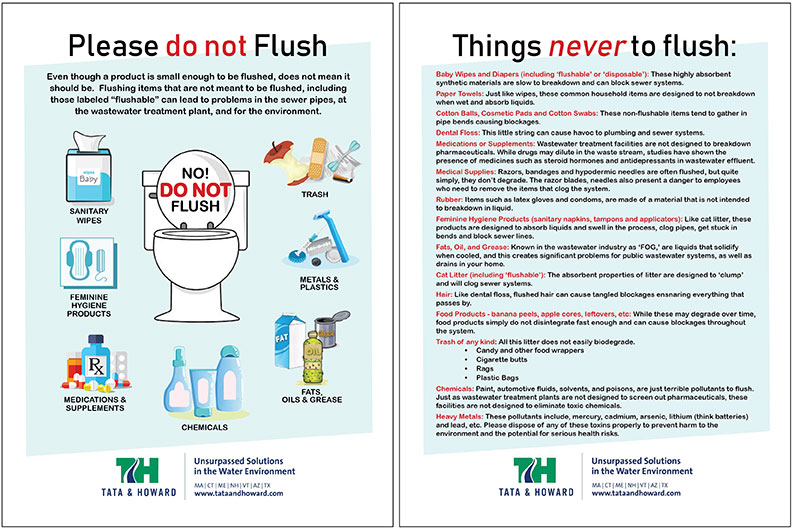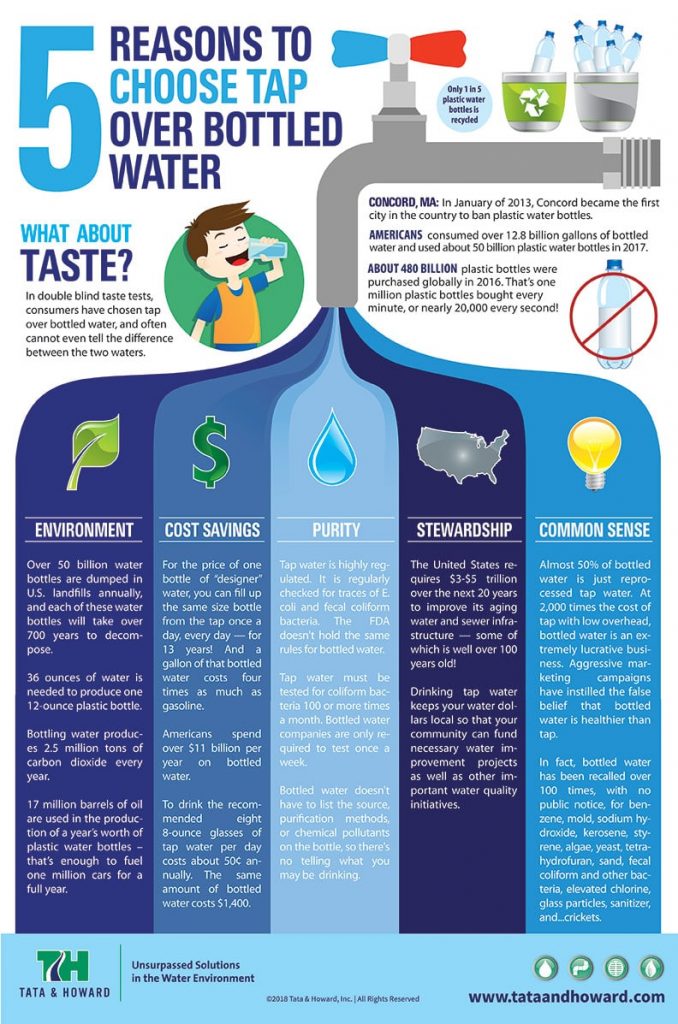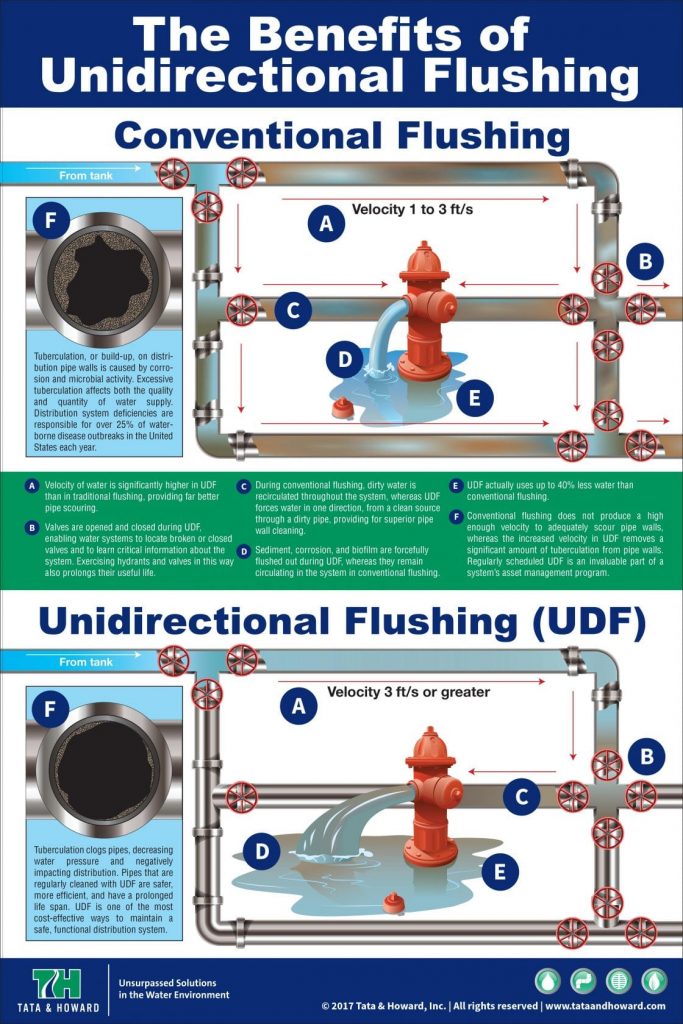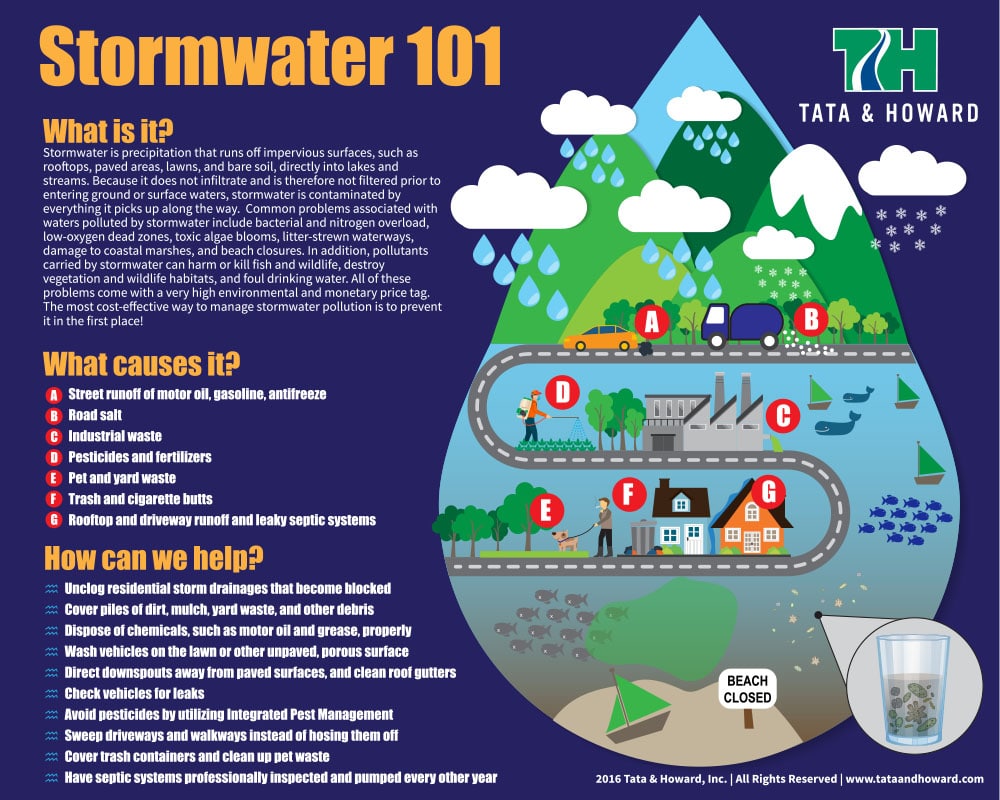During the spring and summer months, stormwater pollution is especially prevalent. Water resulting from precipitation and snow/ice melt either soaks into exposed soil or remains on top of impervious surfaces. As stormwater flows as runoff to nearby waterways, it picks up pollutants including debris, sediment, pesticides, fertilizers, pet waste and more.
A major contributor to stormwater pollution is traced back to residual excess from lawn care maintenance – particularly with fertilizers and lawn clippings.
Check out the five tips below for ways to reduce stormwater pollution when it comes to your lawn maintenance.
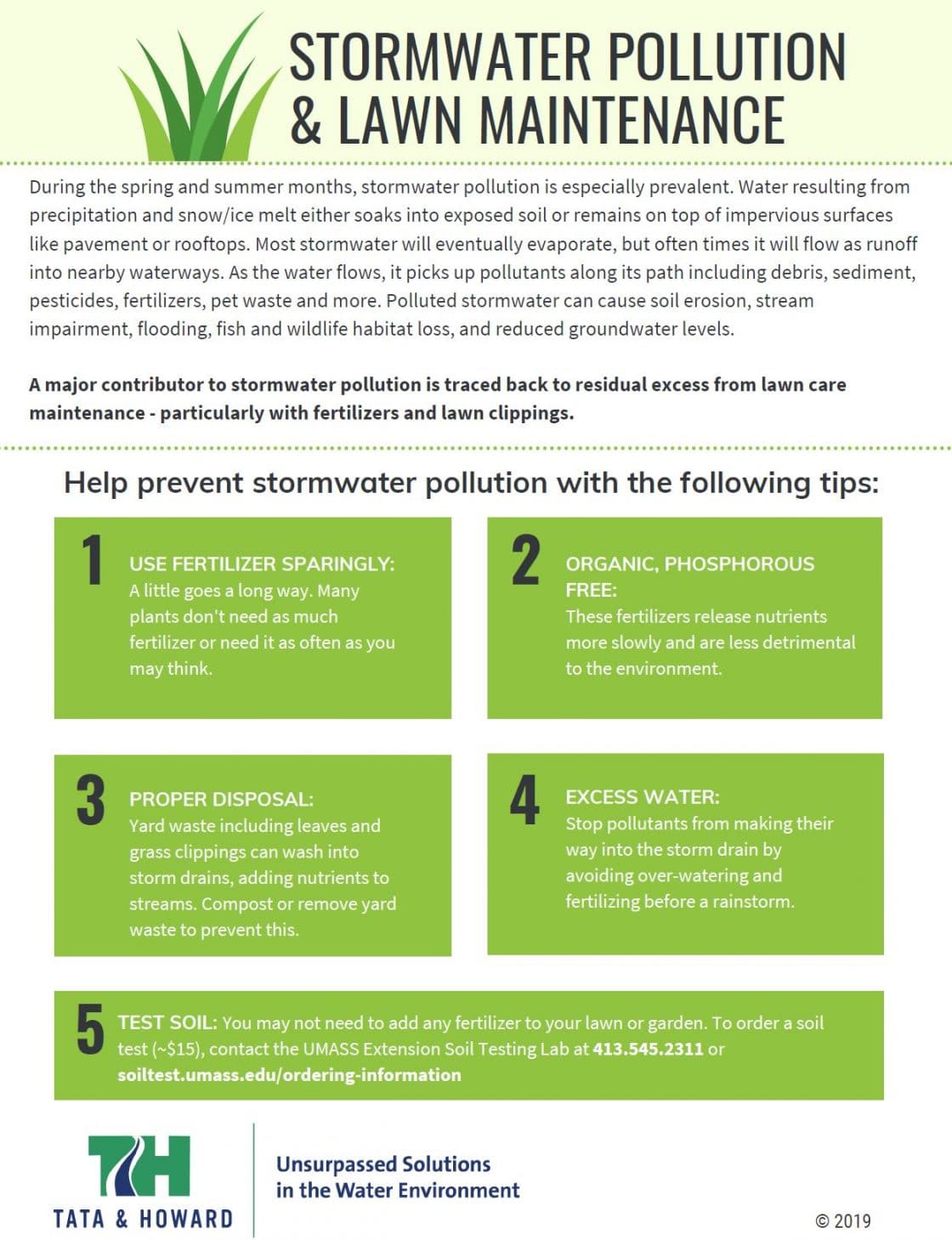
Please feel free to print and share our Stormwater Pollution and Lawn Maintenance Infographic with attribution to Tata & Howard, Inc. A high-resolution pdf can be downloaded by clicking here.
Use Fertilizer Sparingly
A little goes a long way. Many plants don’t need as much fertilizer or need it as often as you think. Reduce stormwater pollution by minimizing your fertilizer during the spring and summer.
Use Organic, Phosphorous Free Fertilizers
In addition to reducing stormwater pollution with the amount of fertilizer you use, it’s equally important to use the proper type. Organic, phosphorous free fertilizers release nutrients slower and are less detrimental to the environment.
Proper Disposal of Waste
One of the best ways to reduce stormwater pollution is with the proper disposal of lawn waste. Leaves and grass clippings can wash into storm drains, adding unwanted nutrients to streams.
Excess Water
Stop pollutants from making their way into the storm drain by avoiding over-watering as well as fertilizing before a rainstorm.
